My travels have made me realize my world view is not the only, nor possibly even the correct world view.
Spending Dia de los Muertos in the country where the tradition has its roots has peeled back my blinders even more.
I have always viewed death as a vast separation from life. I grew up with the notion of heaven and hell and thought the dead were in a place that could not be accessed. Now I’m not so sure.
* * *
I was thrilled at the prospect of spending Dia de los Muertos in Mexico and knew I wanted to learn everything I could about it but had no idea where to start. I looked at everything offered and landed on an historic cemetery tour.
Ten days before the celebrations of Dia De los Muertos began, we walked thirty minutes on steep cobblestone streets to meet Jesús—the irony that Jesús was about to give us lessons on life and death did not escape me. Rather than a white robe and red sash, he wore jeans, a black T-shirt and a straw hat.
Jesús began to tell us a bit of history as we walked past the ten-foot-tall wall and through the arched gate of the cemetery. He explained that the rituals began nearly three thousand years ago among the Aztec, Toltec, and Mayan cultures where death was not feared but considered an extension of life and was honored and celebrated rather than mourned. These people groups believed that the deceased would be on a year-long journey to the land of the dead and therefore they provided them with food, water, and other supplies to help them on their trek.
As we walked through the cemetery of raised graves Jesús explained that the beliefs of the ancient peoples continue to this day and modern Mexicans believe that you die two deaths; one when you leave the physical world, and one when there is no one left to remember you. The gravesites were adorned with photos and flowers and the children’s graves even had toys strewn about to let the dead know they were not forgotten. But this was normal décor for the gravesites, Dia De los Muertos was something else altogether.
On the day we were there—ten days prior—many families were cleaning and preparing the gravesites for the celebration.
At Jesús’ urging we returned to the cemetery the day before Dia de los Muertos to see the families decorating the graves and had plans to return the next day when families would throw colorful blankets across the gravesites and prepare a picnic celebration with the departed’s favorite food and drink.
My heart changed, however, as we strolled the cemetery; a place that looked different than the one we had walked through just nine days earlier. The gravesites were washed clean, and some were even repainted a stark white, others had the metal fences that surrounded the individual sites painted in bright colors. Families were present carefully laying bouquets of marigolds and placing candles to be lit for the picnic celebration.
More and more I found myself walking a thin line of reverence and exploitation. I took two photos, but it didn’t feel right. I felt I was an intruder in a sacred moment, and I was. We decided not to return the following day, but to allow the families to honor their dead without the inquisitive eyes of tourists.
During the time we had first visited the cemetery and the day of the holiday we watched the city transform. Nearly every storefront was decorated with marigolds and images of Catrines and Catrinas. Ofrendas, or altars were displayed everywhere; in stores, along the streets, in the squares, in fountains, in homes, everywhere were altars to honor the dead.
The ofrendas are placed to beckon the spirits back to the land of the living for the festivities. The altars are decorated with marigolds, sugar skulls, and a photo of the departed, along with offerings to represent the four earth elements—fire, water, earth, and wind. Candles (fire) are lit to help guide the spirits home. The deceased’s favorite drink—mostly tequila (water) is placed to quench the thirst after the long journey to the land of the living. The departed’s favorite foods (earth) are set out to nourish the dead. Finally, intricately cut paper banners are strung to allow the souls to pass through (wind).
Marigolds have been part of the tradition of Dia De los Muertos dating back to the Aztecs. The bright color and scent of the flowers are believed to lure spirits from their places of rest back to their families. The sugar skulls, or calaveras, along with the Catrinas are a reminder that in the afterlife we are all the same. None of the riches we acquire, nor the adornment we place on ourselves in this life are taken with us into the next. The sugar skulls and pan de muerto or bread of the dead (a sugar topped bun) also add a sweet treat for the children.
* * *
But Dia De los Muertos is not just for the dead, it is very much a celebration of life. It’s not a funeral. It’s not morbid, it’s not about being spooky, and more than anything it is Not a Mexican Halloween. It’s about joy and color and flavor and celebration.
Crowds of people in brilliant costumes fill the streets, their faces painted to represent the beauty that can be seen even in death. Skeletal depictions adorned with flowers, butterflies, and a myriad of colors. Kevin and I decided to only get half our faces painted to depict the thin veil that separates life from death.
Music filled the air as the glowing lights from the buildings lining the streets reflected on parades of merrymakers wearing bright flower crowns and colorful gowns. Men dressed in formal wear with skeletal face paint accompanied them. It was a night of reverence and revelry I will never forget.
* * *
I will always be grateful for the opportunity to learn more about and be part of the ancient and modern celebration of Dio De los Muertes. They say, and I believe, the veil between life and death is thinnest during this time. One night, when the veil was thin, I had a dream in which I was fearful. In my dream, I heard a voice suddenly begin to sing, quietly at first, then it grew louder. It was a lullaby that is not very well known but special to our family. One my mother used to sing to me when I was a child.
Thanks for visiting with me, mom. See you next year.
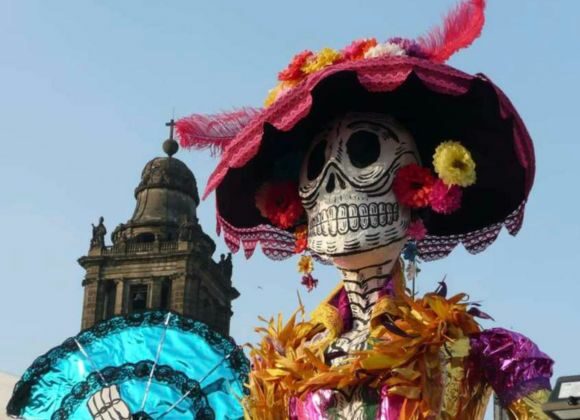
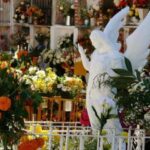
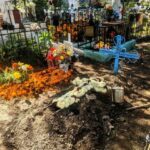
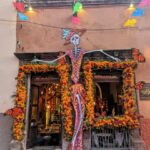
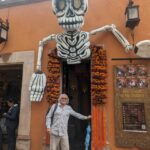
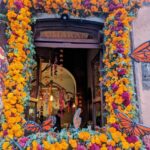
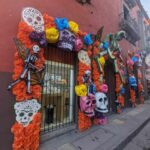
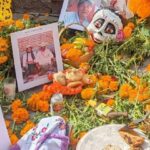
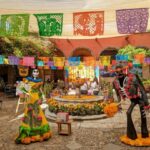
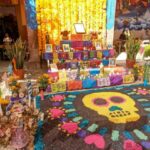
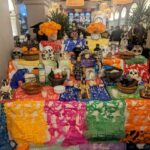
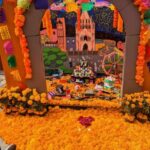
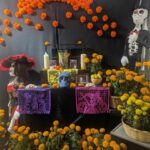
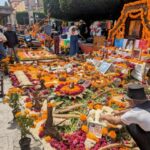
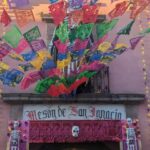
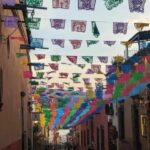


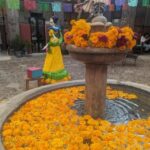
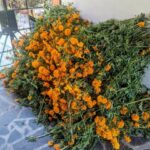
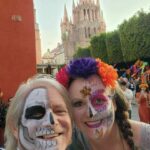
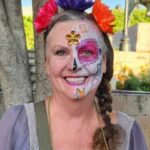
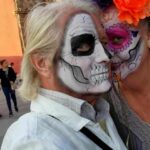
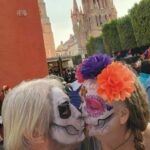
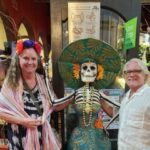
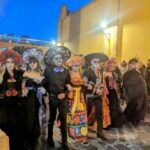
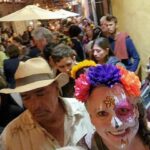
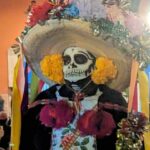
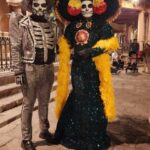
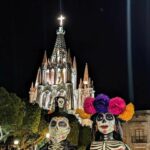
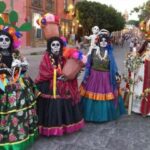
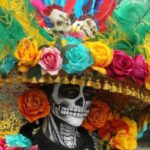
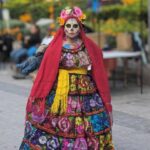
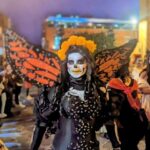
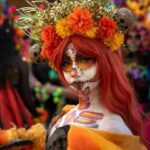
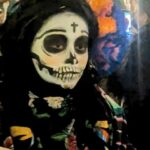
I loved this! Similar commemorations for the dead in the Catholic Church, although not as elaborate. I’m very sure your mom visited you. As a Catholic we believe in the Communion of Saints. I talk to my mom and dad and I talk to other saints, St. Francis, Virgin Mary, St. Pio to name a few. You can talk to your mom anytime. It’s just another dimension.